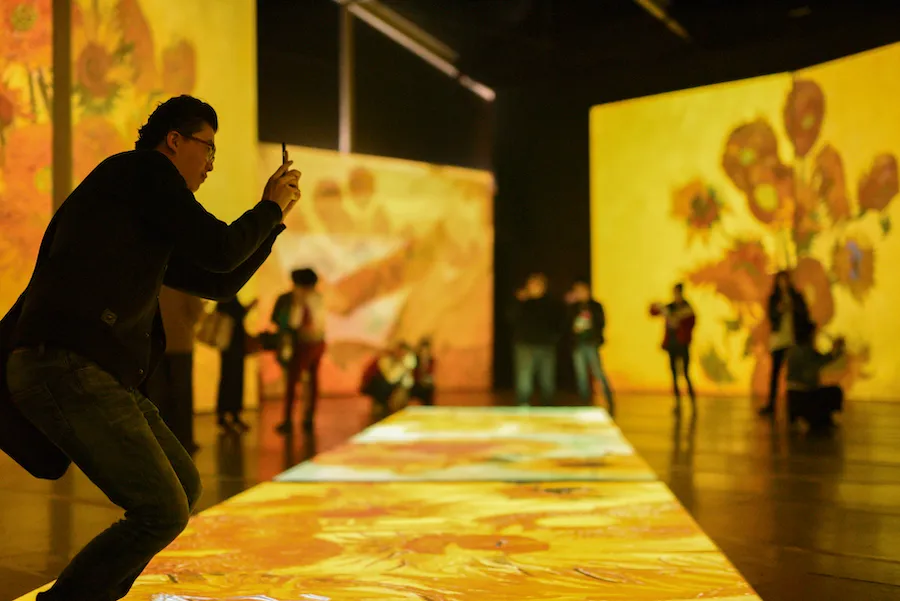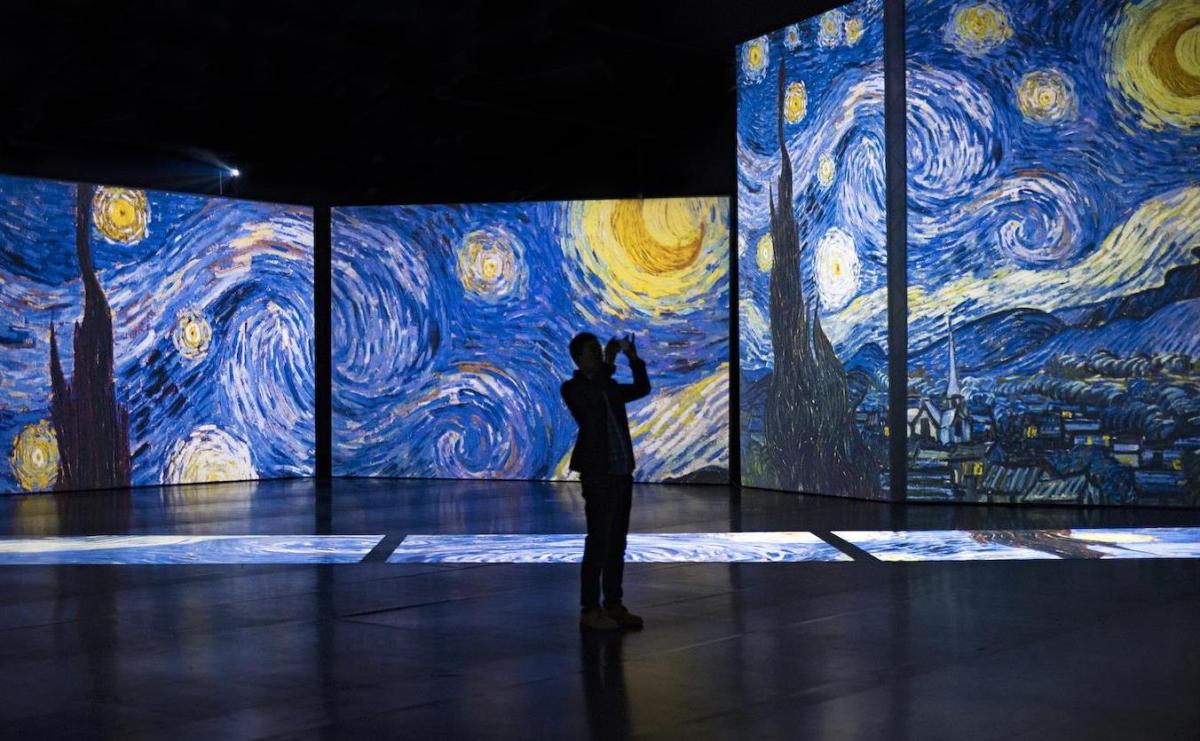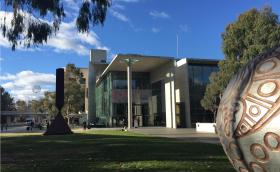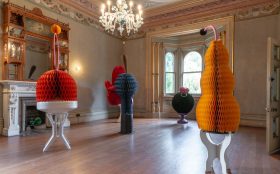Described as ‘the world’s most acclaimed and visited multi-sensory COVID-aware experience’, Van Gogh Alive is the fully immersive art experience event we’ve all been hankering for since lockdown – when once again, art is physically palpable and punches beyond the confines of our home screens.
While the hard-nosed critic might be dismissive of this blockbuster for its ‘cheesy’ popularism and big splash spectacle, the flipside is that this experience fills one with light, with joy. The trick is not expecting it to be a Van Gogh exhibition. This has nothing to do with paintings and everything to do with digital entertainment and its capacity to awe.

Van Gogh Alive, Royal Hall of Industries 2020, Sydney. Photo: ArtsHub.
Despite having toured to over 50 cities around the world and welcomed some 6 million people, the home-grown spectacular Van Gogh Alive nearly didn’t have its Australian premiere.
It was the savvy rethinking of promoters M Agency around creating new ways of experiencing live art in new times – as the sister company M-Live – that used the moment of international cancellations to present Van Gogh Alive at The Royal Hall of Industries, part of the Moore Park Entertainment Quarter in Sydney.
‘The fact that it is absolutely no-touch makes it ideal in today’s COVID-aware climate,’ says Emma Triggs, founder and CEO of the M Agency. Triggs reports that the Australian version of the blockbuster is the largest to date, three times the size that other countries have experienced.
Walking into the space one can’t help be reminded that you are viewing this event in a vast hall, what I remember as the venue where you’d purchase Easter Show bags as a kid or attend trade shows for homewares and design as an adult. This tone seems to be embedded in the architecture, and while it didn’t taint my experience it certainly felt a comfortable match.
What the venue does offer is the scale that is needed. Watching Van Gogh Alive is a timed, 45-minute choreographed digital event, set to the ‘greatest hits’ of classical music. The viewer can move freely around the space, taking in the screens which cloak the walls and rise seven meters to the ceiling. Additional images are projected onto the floor.
The visual journey follows a loose chronological story, and holds viewers until its crescendo with Starry Night.

Van Gogh Alive, Royal Hall of Industries 2020, Sydney. Photo: ArtsHub.
We are told there are over 3,000 crystal-clear images beamed before you; from representations of Van Gogh’s paintings to cropped details of paintings, and animated brushstrokes of the great master – such as the swirling sky over a cornfield brought to further, digital life. At other times elements move across the “paintings” such as birds or sheets of rain – plucked as details and then re-imagined.
Fragments of Van Gogh’s letters, photographs of the places where he painted, and quotes by the artist are also projected, and add context without overwhelming. The least successful of the projected moments is when one of the screens appears as red flocked wallpaper with a salon hang of framed paintings. It sits at odds with all the other projected interpretations of Van Gogh’s paintings, and while an attempt to add an anchor of reality, shifting the scale and reminding us that what we are seeing are images taken from the artist’s precious originals, it only fuels the sense that digital is better.
Therein lies the conundrum of Van Gogh Alive. We swoop to take it in as the first post-COVID live art event but it is still screen bound, just bigger screens.
It is pitched as – that as a viewer – you have the sensation of walking into and through Van Gogh’s paintings: physically fused with the images that have shaped our understanding of art history. I don’t think this event really tells you anything about art history or speaks to the reality of viewing Van Gogh’s paintings, but it does offer an art experience that is undeniably enjoyable and which will appeal to a broad audience. It is also incredibly Instagram friendly.

Van Gogh Alive in Qingdao (China). ©Grande Exhibitions. Image supplied.
I don’t want to be a “Debbie Downer” about this experience. It is great. And yes, part of me loved it – but what I loved more was its capacity to excite and engage a broader population. It is not dissimilar to events like VIVID and White Night which draw incredible crowds through the mix of technology and creativity. We just have to be mindful not to forget “the real art” in the process.
The digital experience was the brainchild of Bruce Peterson and his Melbourne-based company Grande Exhibitions, which started developing this technology in 2010. Peterson said it was his kid, bored of visiting art museums in Europe, that gave him the idea. ‘Without things moving it just wasn’t exciting’, said Peterson, adding that we now live with a screen generation.
The blockbuster experience is one of the first large-scale arts events to open with COVID-aware considerations, with the visitor flow managed so that in viewing one can respect social-distancing naturally. It is a very different blockbuster experience from a gallery, where tight clusters crane to view original artworks.
4 stars: ★★★★
Van Gogh Alive
The Royal Hall of Industries
Entertainment Quarter, Moore Park
18 September – 11 October 2020
This is a strictly timed, ticketed experience in order to adhere to State Health Regulations.
For reservation information visit www.vangoghalive.com.au
Tickets $30.






